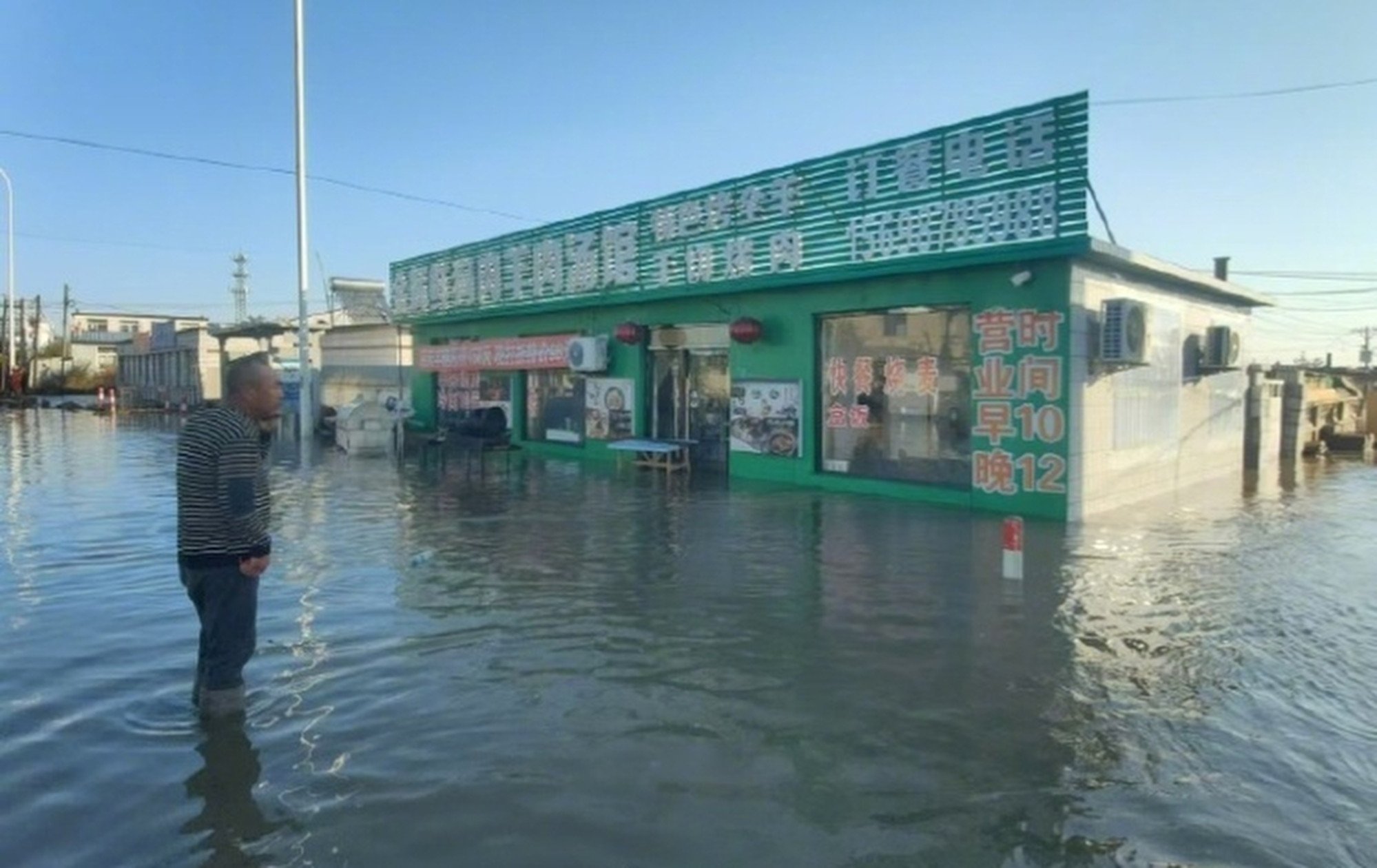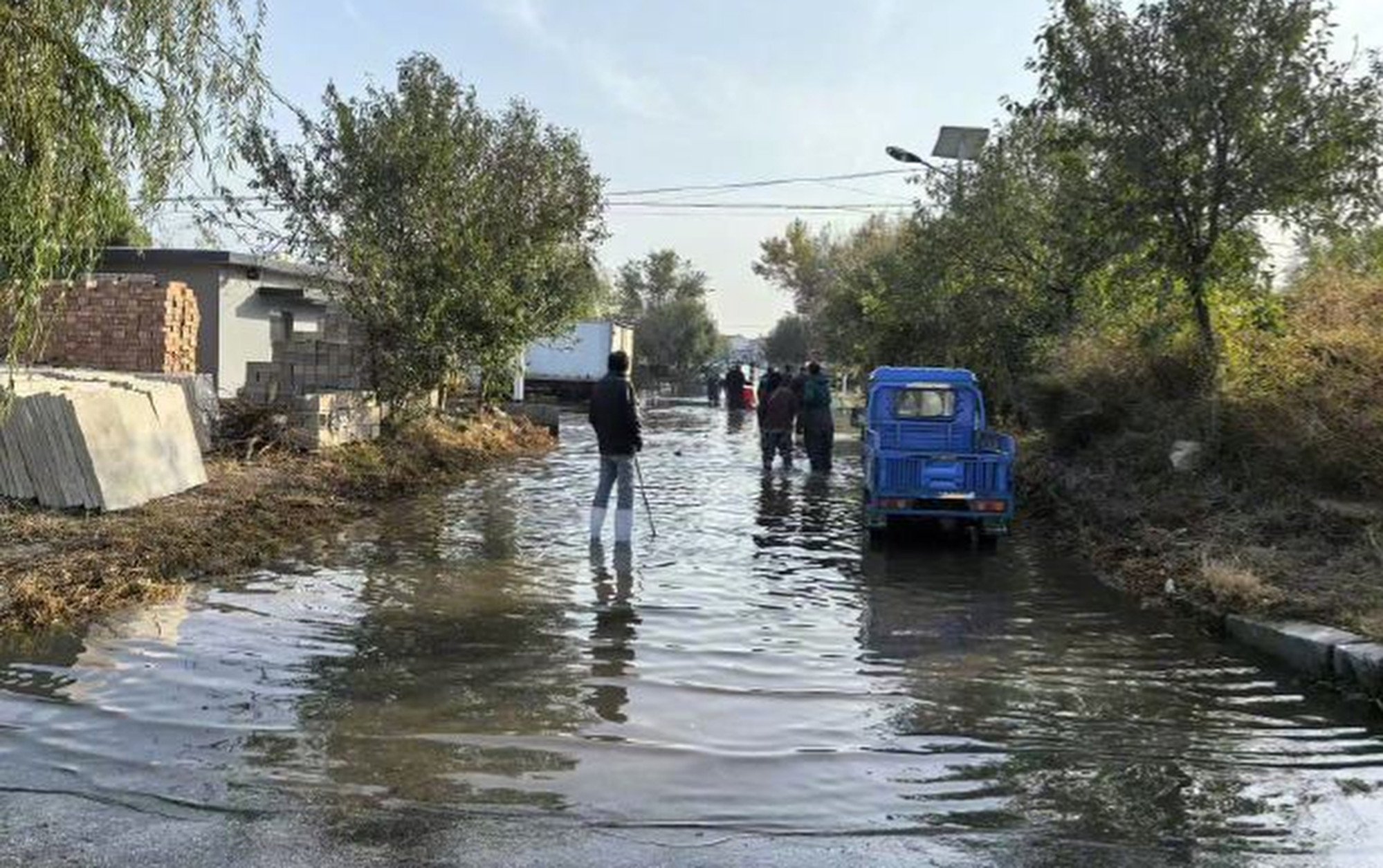
Late Monday evening, along the coast of northeastern China’s Bohai Sea, the water began to rise as it normally does when tide comes in.
But the water kept rising.
Under the cover of darkness, the tidal surge swept across several coastal regions in the provinces of Liaoning and Hebei, as well as the city of Tianjin, which is situated just over 100km (62 miles) southeast of the capital Beijing. The waters quickly flooded inland areas, prompting emergency responses and shattering official records.
Do you have questions about the biggest topics and trends from around the world? Get the answers with SCMP Knowledge, our new platform of curated content with explainers, FAQs, analyses and infographics brought to you by our award-winning team.
“In the absence of obvious wind and waves, a sudden increase in water levels over such a large area has never been recorded either domestically or internationally,” said Fu Cifu, the head of the Storm Surge Forecasting Office at the National Marine Environmental Forecasting Centre, in an interview with state news agency Xinhua on Tuesday.

The event was strong and sustained, with water levels staying about 1 metre (39 inches) above normal for more than 20 hours, with several tide gauge stations in Liaoning reporting record-breaking levels.
But the impact was also felt in many other parts of the country. Reverse flows of seawater surged down the coast of the Yellow Sea in Jiangsu province, as well as the East China Sea coast in southeastern Fujian province. In the South China Sea, including the regions of Hong Kong and Macau, tides were 30cm (12 inches) higher than usual.
Residents all along the coast shared videos online showing submerged roads, with some joking that their villages suddenly looked like Venice. In the cities of Dalian, Yingkou, Panjin, Jinzhou and Huludao, buildings were flooded, prompting residents to scramble to higher areas.

“This serves as a reminder to us. In the context of global climate anomalies, extreme weather events may arrive quietly without any warning. We need more research on new kinds of natural disasters,” Fu said.
As the waters rose, the Ministry of Natural Resources began a level-4 emergency response for marine disasters. Five teams of experts were dispatched to Liaoning, Tianjin, Hebei and Shandong to inspect and survey the high water levels in local areas and assess the damage.
An amateur meteorological enthusiast group, known as “China Weather Fans,” posted a video suggesting that the event was mainly the result of a rare confluence of astronomical, meteorological, oceanographic and topographic factors.
“Firstly, October 20 marked the strongest astronomical tide of the year. Secondly, the recent super moon just ended, raising tide levels by an additional 20cm. Thirdly, the recent weakening of a cold air mass in the north caused a drop in atmospheric pressure at sea level, naturally leading to a rise in sea height. Lastly, a tidal wave generated in the Pacific Ocean coincided with these changes as it reached Bohai Bay,” the group said in the video.

According to an unnamed expert from the Ministry of Natural Resources, the unusual rise in water levels was due mainly to a combination of storm surge oscillations and astronomical tides that began a couple of days earlier.
A warm, moist air flow had moved north along the Yellow River colliding with the southward-moving cold front in the Bohai region, forming a cyclone – similar to a typhoon – which caused a storm surge in advance.
“The oscillation began in Bohai Bay on October 19, propagating southward to Shandong and then rebounding back to Liaoning, where it met the high tide, leading to a seawater backflow phenomenon,” the expert said.
As of Wednesday, the floodwaters in the most severely affected areas like Panjin City had largely receded, traffic had returned to normal, and no casualties had been reported.
More from South China Morning Post:
- Extreme weather risks rising as Tibetan Plateau gets hotter and wetter, scientists warn
- China’s awe-inspiring roads, bridges and urban structures now face the test of extreme weather
- 5 missing in China’s Sichuan as bridge collapse sends cars plunging down slopes
- Can China balance climate and energy concerns as it endures more extreme weather?
For the latest news from the South China Morning Post download our mobile app. Copyright 2024.









































